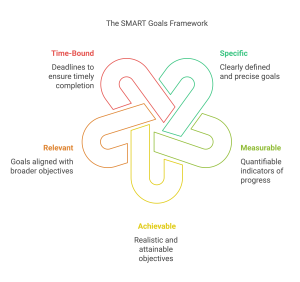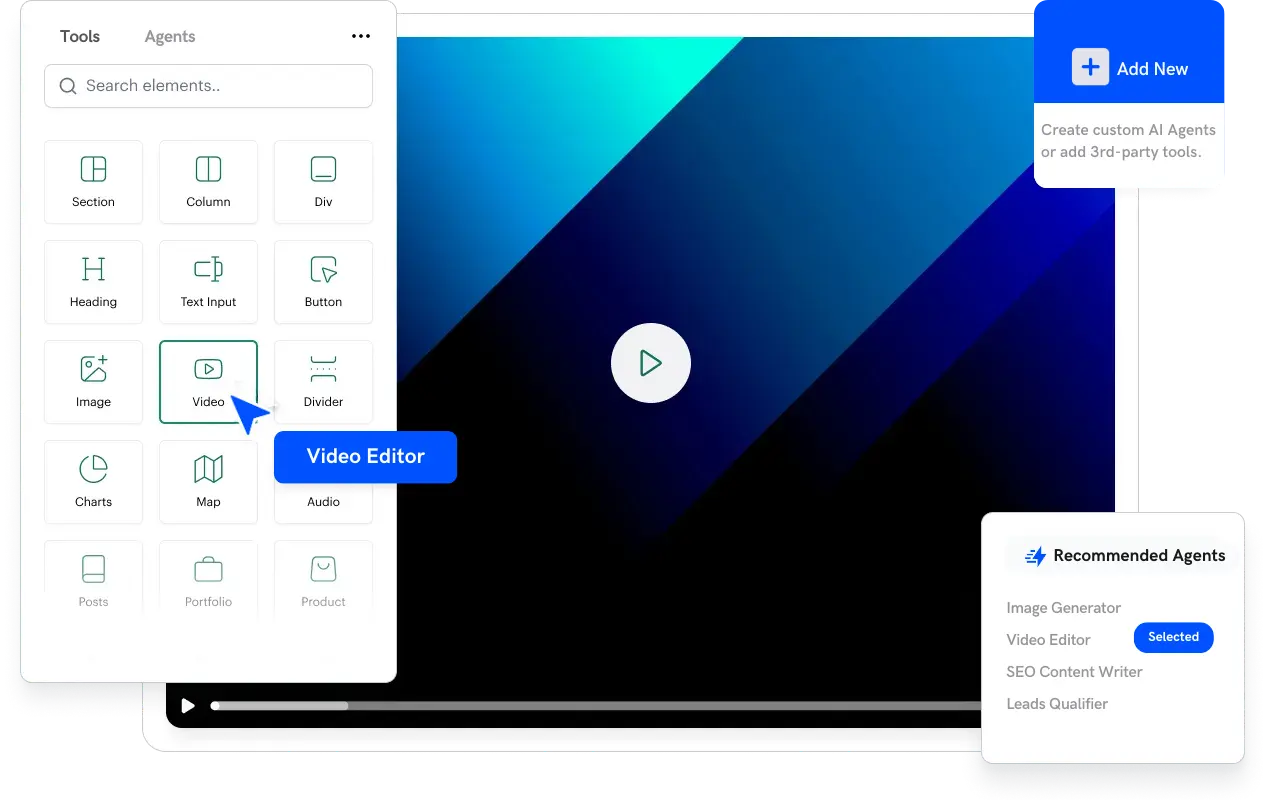How to Set SMART Goals for 2025
Introduction
Setting goals is a common New Year’s resolution, but not all goals are created equal. SMART goals—specific, measurable, achievable, relevant, and time-bound—offer a proven framework for success. By setting SMART goals, individuals and businesses can create clear action plans, track their progress effectively, and stay motivated throughout the year. Whether you’re looking to improve personal productivity, grow a business, or enhance professional skills, SMART goals provide a structured approach to achieving success. This article guides you through setting and achieving SMART goals in 2025.

Why SMART Goals Work
SMART goals are effective because they provide:
- Clarity and Focus – Vague goals often lead to frustration. SMART goals define exactly what needs to be accomplished and create a clear roadmap to success.
- Trackable Progress – With measurable elements, you can monitor progress and make necessary adjustments.
- Motivation and Accountability – Knowing your goals are achievable keeps you committed and encourages consistent effort.
- Efficient Resource Allocation – Helps prioritize time, energy, and resources to maximize results.
- A Sense of Achievement – Reaching small milestones within a goal provides motivation to keep going.
Breaking Down SMART Goals
To implement SMART goals effectively, it’s essential to break down each component:
1. Specific
Your goal should be well-defined and clear. Instead of saying, “I want to grow my business,” a specific goal would be: “Increase monthly revenue by 20% through digital marketing campaigns.”
2. Measurable
A goal must include metrics so progress can be tracked. For example, if you want to increase website traffic, set a measurable target like “increase website visits by 15% within three months.”
3. Achievable
Set goals that challenge you but remain realistic. If your business grew by 5% last year, aiming for 50% growth in a few months may not be practical. Instead, an achievable goal might be “grow revenue by 15% in six months by launching two new marketing campaigns.”
4. Relevant
Ensure your goals align with broader objectives. If your overall mission is to enhance customer experience, a relevant goal would be “reduce customer response time to under two hours by implementing a chatbot.”
5. Time-Bound
Set deadlines to maintain urgency and prevent procrastination. Example: “Complete an advanced coding course in three months by dedicating five hours per week.”
How to Set SMART Goals for Different Aspects of Life
SMART goals can be applied in various areas of life. Here are some examples:
1. Personal Development
- Read 12 books in 2025 by finishing one book per month.
- Meditate for 10 minutes daily for improved mental clarity.
2. Career Advancement
- Earn a professional certification within six months by completing online courses.
- Increase networking efforts by attending one industry event per quarter.
3. Business Growth
- Expand market reach by launching three new products by Q3 of 2025.
- Improve customer satisfaction ratings by 15% through enhanced support services.
4. Health and Fitness
- Lose 10 pounds in three months by exercising four times a week and following a balanced diet.
- Run a half-marathon by training three times a week for six months.
Tools for Goal Tracking
To stay on track with SMART goals, consider using these tools:
1. Goal-Setting Apps
- Strides: Allows users to track daily, weekly, and monthly goals with visual progress reports.
- Goalscape: Helps create goal hierarchies and visualize goal progress.
2. Project Management Software
- Trello: Ideal for organizing tasks and deadlines.
- Asana: Enables collaborative goal tracking for teams and individuals.
3. Visualization Techniques
- Create vision boards with images and quotes related to your goals.
- Use progress charts to maintain motivation and celebrate small achievements.
Common Mistakes to Avoid When Setting SMART Goals
Even with the SMART framework, some common mistakes can hinder success:
1. Setting Unrealistic Goals
Ambition is great, but unrealistic expectations can lead to frustration. Always consider available resources and time constraints.
2. Ignoring Flexibility
Life is unpredictable, and sometimes adjustments are necessary. Be open to modifying goals if circumstances change.
3. Lack of Accountability
Sharing your goals with a mentor, coach, or friend increases commitment and accountability.
4. Not Reviewing Progress Regularly
Set check-in points (weekly or monthly) to assess your progress and make necessary adjustments.
Conclusion
SMART goals can transform your aspirations into actionable plans. By ensuring your goals are Specific, Measurable, Achievable, Relevant, and Time-Bound, you set yourself up for success in 2025. Whether your focus is personal growth, career advancement, or business expansion, adopting this structured approach will enhance productivity and motivation.
By tracking progress, using the right tools, and avoiding common pitfalls, you’ll be well-equipped to make 2025 your most successful year yet. Start setting your SMART goals today and take control of your future!
Photo by Ronnie Overgoor on Unsplash






